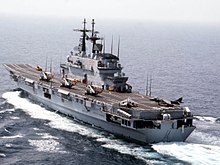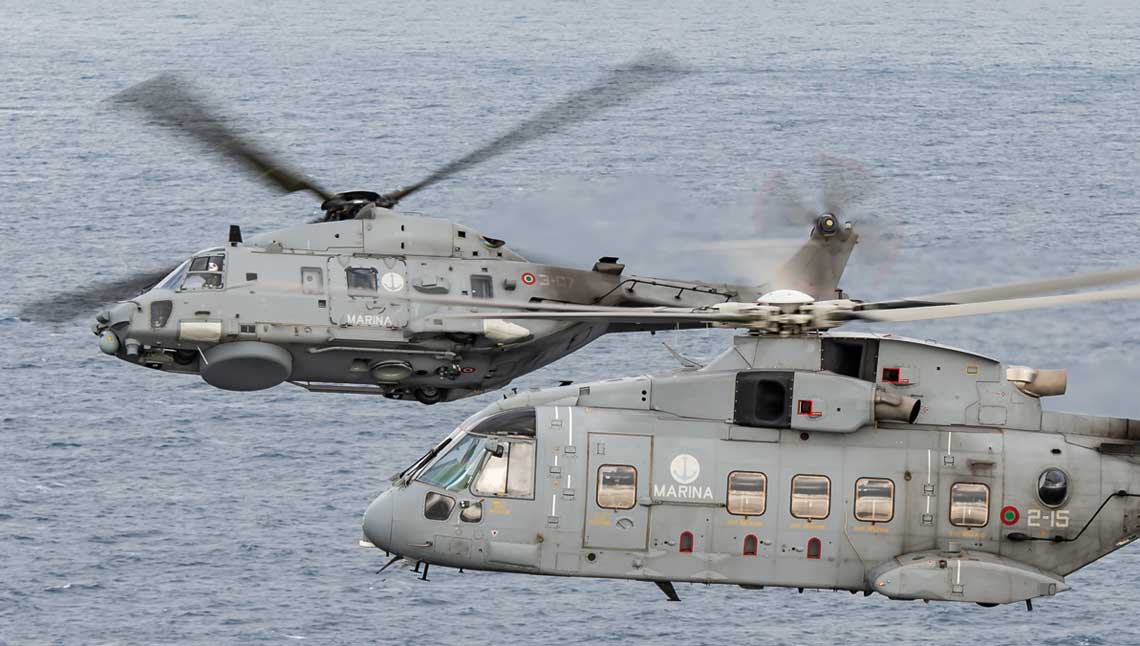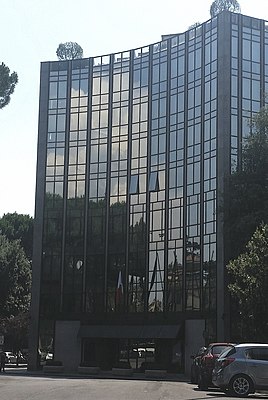
Naval defense of Italy

The main task of the Luni base is to provide logistical support and standardization training for two helicopter squadrons of the Italian Naval Aviation. In addition, the base supports the operation of airborne helicopters of the Italian Navy and helicopters performing tasks in remote theaters of operations.
Maristaeli (Marina Stazione Elicotteri - Naval Helicopter Base) in Luni (helicopter terminal Sarzana-Luni) is one of the three air bases of the Italian Navy - Marina Militare Italiana (MMI). Since 1999, it has been named after Admiral Giovanni Fiorini, one of the founders of helicopter aviation, Italian naval aviation and the Maristaela Luni base.
The Luni base has a relatively short history, since its construction was carried out in the 60s near the operating airport. The base was ready for operation on November 1, 1969, when 5° Gruppo Elicoterri (5 Helicopter Squadron) was formed here, equipped with Agusta-Bell AB-47J rotorcraft. In May 1971, the squadron of 1° Gruppo Elicoterri, equipped with Sikorsky SH-34 rotorcraft, was transported here from Catania-Fontanarossa in Sicily. Since then, two helicopter units have performed operational and logistical activities from Maristaela Luni.
training
Part of the infrastructure of the base consists of two very important components that train both flight and maintenance personnel. Crews can use the Agusta-Westland EH-101 helicopter simulator. The Full Flight Simulator (FMFS) and Rear Crew Trainer Trainer (RCT), delivered in 2011, provide comprehensive training for crews of all versions of this type of helicopter, allowing cadet pilots and already trained pilots to acquire or improve their skills. They also allow you to work out special cases in flight, flight training using night vision goggles, boarding ships and practicing tactical actions.
The RCT simulator is a training station for operators of task systems installed on the EH-101 helicopter in the anti-submarine and surface ship version, where already trained crews also support and improve their skills. Both simulators can be used separately or combined, providing simultaneous training for the entire crew, both pilots and operators of the complexes. Unlike EH-101 crews, NH Industries SH-90 helicopter crews at Looney do not have their own simulator here and must be trained at the NH Industries consortium's training center.
Looney's base is also equipped with a so-called helo-dunker. This building, which houses the STC Survival Training Center, has a large swimming pool inside and a mock helicopter cockpit, a "dunker helicopter", which is used to train getting out of the helicopter when it falls into the water. The mock fuselage, including the cockpit and the cockpit of the control system operator, is lowered on large steel beams and can be submerged into the pool and then rotated to various positions. Here, the crews are trained to get out of the helicopter after falling into the water, including in an inverted position.
Lieutenant Commander Rambelli, head of the Survival Training Center, explains: Once a year, pilots and other crew members must complete a maritime casualty survival course to maintain their skills. The two-day course includes theoretical training and a "wet" part, when the pilots have to struggle to get out of it safe and sound. In this part, the difficulties are assessed. Every year we train 450-500 pilots and crew members in survival, and we have twenty years of experience in this.
Initial training lasts four days for Navy crews and three days for Air Force crews. Lieutenant Commander Rambelli explains: This is because Air Force crews do not use oxygen masks, they are not trained to do so due to low flying. In addition, we train not only military crews. We have a wide range of clients, and we also provide survival training for police, carabinieri, coast guard and Leonardo crew. Over the years, we have also trained crews from other countries. For many years, our center has been training crews of the Greek Navy, and on February 4, 2019, we started training the crews of the Qatari Navy, as the country has just acquired NH-90 helicopters. The training program for them is designed for several years.
The Italians use the Modular Egress Training Simulator (METS) Model 40 survival training device manufactured by the Canadian company Survival Systems Limited. This is a very modern system that offers a lot of training opportunities, as Commander Rambelli says: “We launched this new simulator in September 2018 and it gives us the opportunity to train in many scenarios. We can, for example, train in a pool with a helicopter winch, which we have not been able to do in the past. The advantage of this new system is that we can use eight removable emergency exits. This way we can reconfigure the simulator to match the emergency exits of an EH-101, NH-90 or AW-139 helicopter, all on the same device.
Operational tasks
The main task of the Luni base is the logistics and standardization of the crews of two helicopter squadrons. In addition, the base provides for the operation of helicopters located on the ships of the Italian Navy and performing tasks in remote theaters of military operations. The main task of both helicopter squadrons is to maintain the combat readiness of the flight crew and ground personnel, as well as anti-submarine and surface anti-submarine equipment. These units also support the operations of the Marine Regiment of the 1st San Marco Regiment, the assault unit of the Italian Navy.
The Italian Navy has a total of 18 EH-101 helicopters in three different versions. Six of them are in ZOP/ZOW (anti-submarine/anti-submarine warfare) configuration, which are designated SH-101A in Italy. Another four are helicopters for radar surveillance of the airspace and the sea surface, known as the EH-101A. Finally, the last eight are transport helicopters to support amphibious operations, they received the designation UH-101A.

